SALTA, ARGENTINA - Flying from the stylish streets of Buenos Aires into Argentina’s northwest leads me to the provinces not on most traveller’s bucket list.
Discovering Salta’s vineyards and peaceful Lake District, I realize this area is a quick antidote to the urban jungle thanks to a commitment to a slower way of life.
Salta is typically South American; a Catholic church dominates the downtown skyline, fruit vendors line the main square and its citizens are up early to ride the buses or walk the streets to get to school or work.
Rolling hills surround the city, while a scattering of vacation homes along the Reservoir Cabra Corral lure urbanites to the area for relaxing weekend recreation. Small farms disappear in the distance as the elevation increases, and a dry riverbed adjacent to the road is surrounded by the soaring red, orange, yellow, blue and purple swatches of the Calchaquí Valley’s rock formations.
My camera gets a workout as I traverse south through the colourful canyons of Quebrada de las Conchas, which boasts stunning rock formations like Garganta del Diablo (Devil’s Throat) and El Anfiteatro (Amphitheatre). Visitors test their singing skills in a cacophony of languages within the rock walls at each location.
It’s tempting to stop every 10 minutes to gaze at the mountains and the valley’s ever-changing views; the vista from Mirador de Las Tres Cruces is worthy of a National Geographic cover. Although the drive is barely 200 kilometres, it takes over four hours with speed limited by narrow roads and regular switchbacks.
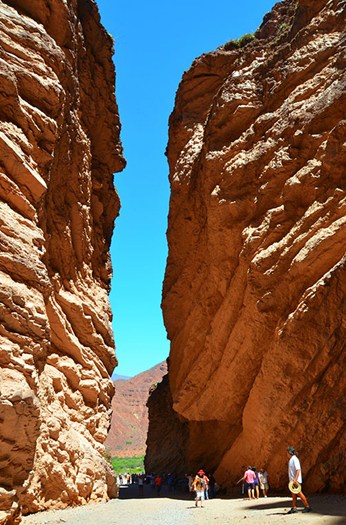
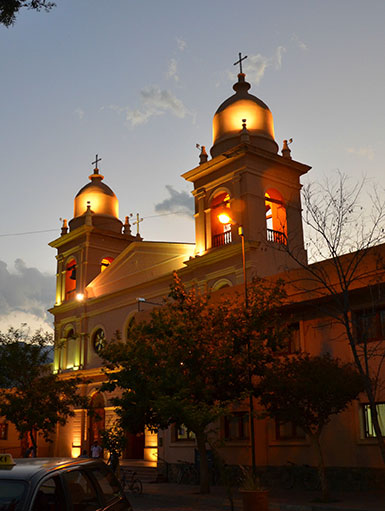
Left: Garganta del Diablo (Devil’s Throat) and El Anfiteatro are amazing rock formations. Right: The outback in Argentina is full of colonial reminders like this Spanish-style church.
The small city of Cafayate greets visitors with a pretty plaza ringed with craft shops, cafés and wine bars, and the surrounding area is filled with vineyards featuring endless rows of Torrontés vines, the popular white varietal of the region.
This wine is the reason this region is becoming a popular topic among oenophiles; with over 4,000 hectares of vineyards, it’s the most productive viticulture area of Salta and has been labelled the “cradle of high altitude wines” in Argentina.
As I sample glasses of the local vino blanco on the sunny terrace at Piattelli Vineyards (known for receiving the highest rated Torrontés vintage by Wine Spectator magazine), and later during dinner at cosy Viñas de Cafayate, a modern boutique hotel and vineyard, I know I’ve just started to scratch the surface of Argentina’s offerings.
Taking a road trip south into Tucumán — the smallest province in the country — through the next part of the Calchaquí Valley, my journey is taking me deeper into the country’s ever-changing landscape. Leaving behind grape vines, my view is now quintessential Sonoran-style desert: dusty rolling hills and saguaro cacti.
The first stop is the ruins of Quilmes, which was the largest pre-Colombian settlement in the country, dating back to 850 AD, with 5,000 people living here during its height.
A guide explains how the Quilmes lived off the land and resisted invasions by the Incas and contact with the Spanish explorers until the Spanish defeated them in 1667. There are rows of low stone walls, the staggered remains of houses that once covered the hillside, a reminder of these once mighty ancient people.
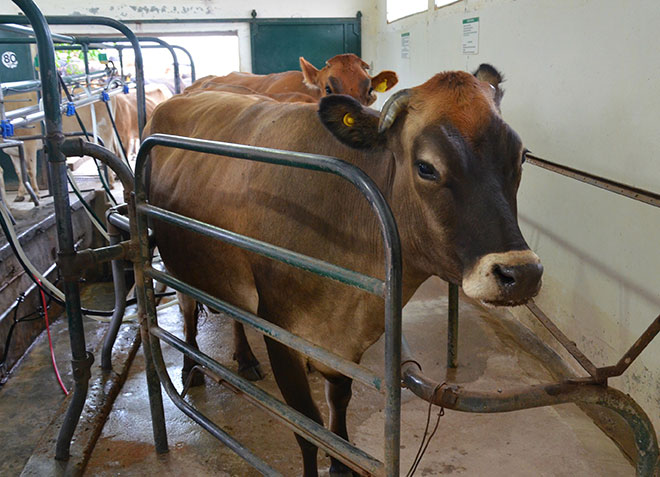
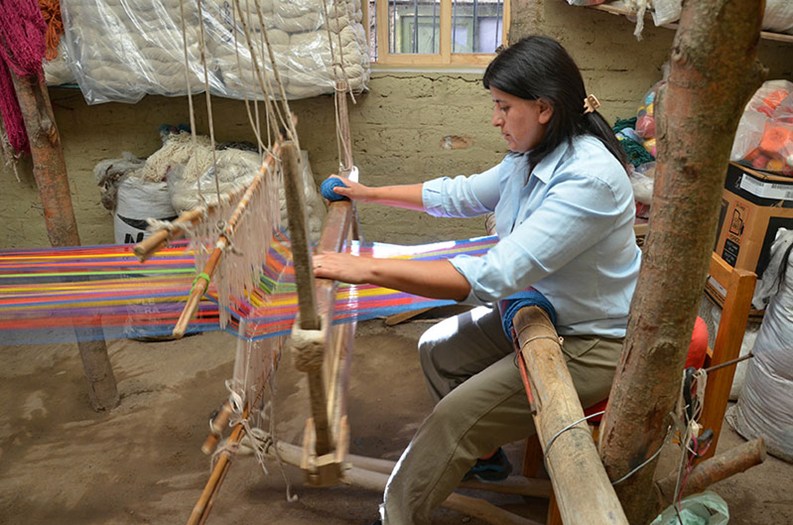
Left: The remote area of Argentina is where the prized livestock call home. Right: Crafts people rely on ancient looms on which to create their amazing fabric.
There’s not much to see beyond the wildflowers and cacti lining the road as the highway continues, but suddenly the centuries disappear quickly as I arrive in Amaicha del Valle. The quirky Museo Pachamama, inspired by the country’s cultural past, is a bold 21st-century creation.
Artist Hector Cruz has interwoven architecture with art, his mosaics covering the pathways and outer walls of the museum, while his two- and three-storey sculptures are found between buildings, erected in homage to Pachamama, the Mother Earth deity of South America.
The museum features natural and cultural history dioramas of the area and a gallery of contemporary art by Cruz. It’s creative excess at its best, and a worthy stop during a road trip. Silver jewellery, small sculptures, colourful textiles and traditional paintings lure visitors to the museum’s wonderful gift shop.
Heading through the high elevations of the Calchaquí Mountains, the descent puts us into a new district; the farms and ranches of Tafi de Valle, a hill town and resort area of western Tucumán. Favoured by the citizens of Buenos Aires during the extremes of summer, Tafi de Valle’s lake area and shady resort spots are an idyllic escape when the temperature heads beyond 30C.
I’m quickly ensconced at Las Carreras Estancia, originally built by the Jesuits, where the rustic tiles and carved wood furniture are paired with colourful hand-loomed textiles, all made locally. This region’s Artisan Route features local craftspeople who are preserving cultural traditions, working with leather, clay, stone, sheep and llama wool.
Overlooking the stables, with a paddock full of horses, llamas and cattle, Las Carreras also includes another barn filled with the pride of the estancia: dairy cows producing milk for taif cheese. Based on a 300-year-old recipe brought by Spanish Jesuits to this region, this estancia manufactures six varieties, featuring flavours such as oregano and pepper.
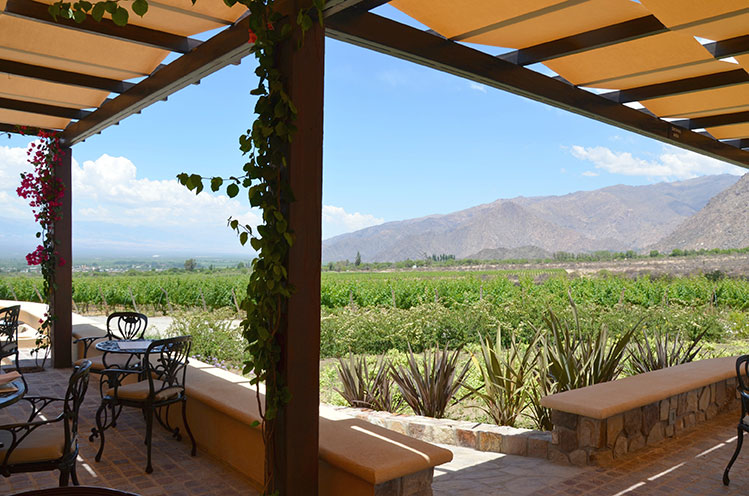
Above: Accommodation in the Outback can be quite surprising.
Visitors can either roam the extensive estancia grounds by foot or on horseback, or relax in the welcoming common areas, the air scented by Andean gourmet creations, including the house-made cheeses used in handmade empanadas, ravioli and quesillo in fig leaf.
Another few hours on the road the next day leads us through the switchbacks of the lush mountain terrain into the city of San Miguel de Tucumán, the capital of the province and the home of Argentina’s independence.
Founded by a Spanish conquistador in the 16th century, the city’s Museo Casa Histórica de la Independencia was where Argentine leaders issued the Declaration of Independence in July 1816.
Touring the city in a Ford Model A Phaeton seems to be the appropriate way to explore San Miguel de Tucumán’s Spanish colonial architecture. The drive leads me past several historic plazas, museums and to El Parque 9 de Julio to admire its gardens and floral clock.
As night comes over San Miguel de Tucumán, Plaza Independencia is the place to be. Bordered by architecture of the past three centuries, the main square is filled with locals meeting friends and family for an after-work drink or ice cream and spending the evening under the stars.
And for this traveller, it seems fitting to toast these regions, proudly protecting their natural beauty and sharing their creativity through art, cuisine and wine.